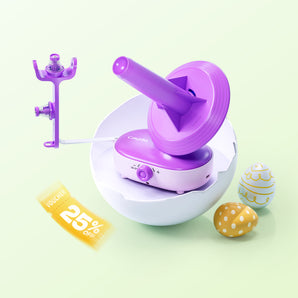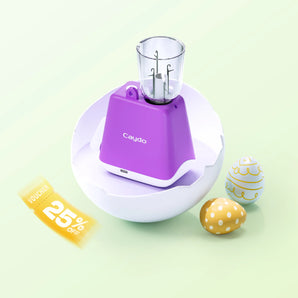Understanding Yarn Terminology: Ball, Hank, and Skein
When you're starting your exciting journey into the world of fiber crafts, the terms "ball," "hank," and "skein" may all seem interchangeable—or even entirely unfamiliar. As you dive into patterns and browse at shops, these terms pop up frequently, which can lead to a bit of confusion. Understanding what each term means is essential for your crafting experience.

What is a Skein?
A skein of yarn refers to a bundle of yarn wound into an oblong shape, ready for use in knitting, crocheting, and other fiber crafts. This format is the most common way to purchase yarn in larger retail stores. Each skein is typically secured with a label that provides important details about the fiber content and recommended usage. Produced by commercial yarn manufacturers using specialized industrial winders, skeins allow crafters to pull yarn from either the outside or the center. However, as the yarn unwinds, skeins can lose their shape, and center-pull options may lead to tangling. In the crafting community, the term "skein" is also frequently used to refer to a quantity of yarn, prompting questions like “What can I create with one skein?” or “How many skeins are needed for a blanket?” This use of the term can be somewhat misleading, as it describes a winding method rather than a standard weight.
What is a Ball?
What distinguishes a skein from a ball of yarn? Generally, a ball is made by hand-winding yarn and is less commonly found for sale due to this labor-intensive process. Balls can easily roll off shelves, making them less practical for storage, especially since they don't allow the center of the yarn to breathe. To prevent balls from rolling around, many knitters use yarn bowls or project bags. Despite the lack of special tools for winding yarn into a ball, this method remains popular among knitters.
One significant advantage of using balls relates to twist. When yarn is wound into a ball, skein, or yarn cake, it can be twisted in either a clockwise or counter-clockwise direction, depending on how it’s wound. Because a ball can rotate freely, this unwinding process naturally untwists the yarn, resulting in a well-balanced working strand. In contrast, a skein or yarn cake holds its shape without a spindle, which means any stored twist directly transfers to the knitted fabric unless preventive measures are taken. This can potentially lead to uneven or biased fabric.
What is a Hank?
A hank of yarn consists of a long loop twisted into a cord and secured with a knot or additional threads, making it a common form for indie-dyed yarn. The loose loops facilitate the dyeing process, allowing for even dye penetration, as the yarn hangs freely in a dye vat. In contrast, most skeins are dyed prior to spinning, resulting in a more uniform color.
To knit from a hank, it must first be unwound using a yarn swift, the backs of two chairs, or by having someone hold it open. Attempting to knit directly from a hank can lead to inevitable tangles. Hanks are sold for practical reasons: they showcase the colorway more vividly, helping buyers envision how the yarn will appear in a finished project. Additionally, winding yarn into skeins is labor-intensive and can affect pricing, which is why some shops offer winding services for a small fee. It’s worth noting that in the knitting community, hanks are often mistakenly referred to as skeins, either due to confusion or as a general term for units of yarn.
The Joy of Skeins
Skeins of yarn are undeniably tempting. They hang enticingly in stores, promising endless creative possibilities. However, while they look beautiful, knitting directly from a skein can lead to frustration. Winding your yarn into a ball transforms it into a manageable, easy-to-use format, allowing you to dive into your project without hassle.
https://nimble-needles.com/wool-and-tools/what-is-a-skein-of-yarn/
https://nimble-needles.com/wool-and-tools/what-is-a-skein-of-yarn/
https://magdamakes.com/wind-yarn-into-a-ball/
Why Wind Your Yarn?
Avoiding Tangling
One of the biggest issues with knitting directly from a skein is the risk of tangling. As you pull yarn from the skein, it can twist and knot, leading to a frustrating mess. By winding your yarn into a ball first, you significantly reduce the chances of tangling, allowing you to focus on your project instead of untangling yarn.
Preventing Stretching
Yarn in a skein is relaxed and unstretched. When you wind it into a ball, there's a risk of adding extra stretch, which can affect gauge and elasticity over time. If you plan to store your yarn for a while before using it, it's best to keep it in its natural state to maintain its integrity.
Ease of Use
A wound ball or cake of yarn is much easier to work with. You can pull yarn from the center, preventing it from rolling away and ensuring a smooth knitting experience. This ease of use is especially valuable when you need to pause and resume your project.
Preparation for Future Projects
Winding your yarn into a ball prepares it for future use. It allows you to test colors, create swatches, or even cut off scraps for other projects without the fuss of untangling a skein. Plus, it looks great sitting in your stash!
How to Wind Your Yarn
When you're ready to wind your yarn, there are a few methods you can use:
Using a Yarn Swift and Caydo Yarn Cake Winder M1: This is the most efficient way to create a beautiful cake of yarn. Just ensure you wind slowly and with care to avoid straining the fibers.
Manual Methods: If you don’t have a swift, you can use your hands, a friend’s hands, or even the back of a chair. Just make sure to keep the yarn relaxed as you wind.
Tips for a Smooth Winding Process
-Align the Strands: Before you start winding, take a moment to untwist and align the strands of your skein. This will help prevent tangles during the winding process.
-Wind Slowly: Rushing can lead to tightly wound yarn that may tangle or strain. Wind at a steady, comfortable pace.
-Leave Room: Keeping a little distance between your swift and winder gives you better control over tension, resulting in a more evenly wound ball.
Final Words
While it might be tempting to jump straight into a project with your new skein, taking the time to wind your yarn into a ball or cake is a worthwhile investment. It minimizes tangling, preserves the yarn’s quality, and enhances your overall knitting experience. So, before you cast on, consider grabbing the Caydo Electric Yarn Cake Winder M1 to make winding a breeze. Enjoy the ease that technology brings as it transforms your skein into a delightful ball of yarn! Happy knitting!








![[Must-have] Knitting Yarn and Wire Set - Caydo](http://www.caydo.com/cdn/shop/files/3_4c349a4b-7e4d-4fa8-b6df-6561cf08410c.jpg?v=1731059827&width=298)
![[Must-have] Knitting Yarn and Wire Set - Caydo](http://www.caydo.com/cdn/shop/files/1_c1a8ec5f-79f5-4c02-b655-aaba689678cf.jpg?v=1731060862&width=298)











How to order the thread cutter